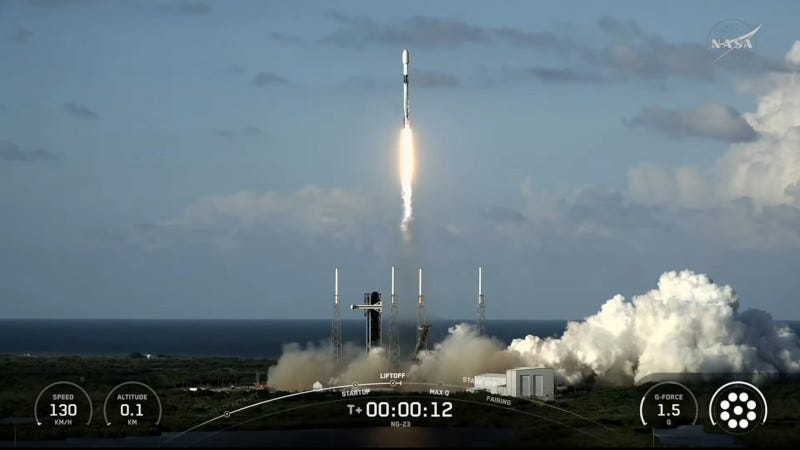Cygnus XL Carries Supplies to the International Space Station
NG-23 Mission Marks the Inaugural Flight of the Larger Spacecraft
The inaugural flight of the Cygnus XL spacecraft, an expanded version of Northrop Grumman’s vehicle with 33% more cargo capacity than the previous variant, has arrived at the International Space Station. NG-23 carried over 11,000 pounds of equipment, science experiments and supplies to the crew aboard the space station.
Arrival at the station was delayed by a day. On Sept. 16, the Cygnus XL spacecraft’s main engine shut down earlier than planned during two orbit-raising burns for its space station rendezvous. NASA and Northrop Grumman delayed its arrival while flight controllers assessed an alternate approach plan. The early shutdown was triggered by a conservative software safeguard. The spacecraft was cleared for its approach to the orbiting laboratory early Thursday.
"Our Cygnus XL is another step towards a thriving commercial space economy. The spacecraft carries more cargo, making each mission more efficient."
Ryan Tintner, Northrop Grumman
Northrop Grumman names each Cygnus spacecraft in honor of an individual who has made great contributions to human spaceflight. For NG-23, Cygnus XL is named for William “Willie” McCool, a NASA astronaut and naval aviator. After completing his flight training in 1986, Willie’s long U.S. Navy career included test and operational deployments, totaling over 2,800 flight hours. Willie was the pilot of the STS-107 mission aboard the Space Shuttle Columbia in 2003, and perished during the Columbia accident.
Since 2022, Cygnus has provided reboost services to help the station maintain its orbit, with the opportunity for more during this mission based on NASA’s needs. Cygnus XL incorporates several Northrop Grumman-manufactured components, such as avionics and power modules, harness assemblies, UltraFlex solar arrays, spacecraft structures, propulsion tanks and loop heat pipe radiators for temperature control.

"Our Cygnus XL is another step towards a thriving commercial space economy. The spacecraft carries more cargo, making each mission more efficient," said Ryan Tintner, vice president, civil space systems, Northrop Grumman. "We’ve supported NASA and the space station for decades, and we know what it takes to develop advanced capabilities for exploring space.”
The resupply mission is carrying dozens of research experiments that will be conducted during Expedition 73, including materials to produce semiconductor crystals in space and equipment to develop improvements for cryogenic fuel tanks. The spacecraft also will deliver a specialized UV light system to prevent the growth of microbe communities that form in water systems and supplies to produce pharmaceutical crystals that could treat cancer and other diseases.
These are just a sample of the hundreds of scientific investigations conducted aboard the station in the areas of biology and biotechnology, Earth and space science, physical sciences, as well as technology development and demonstrations.



